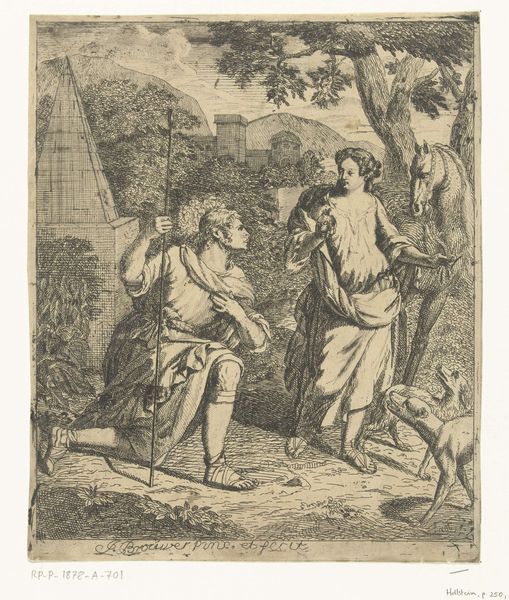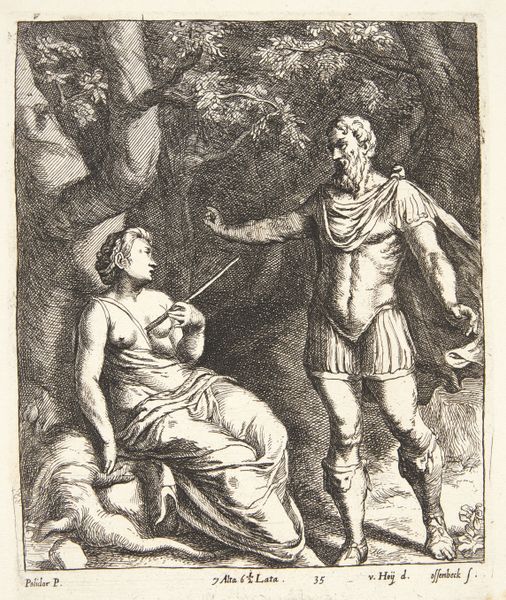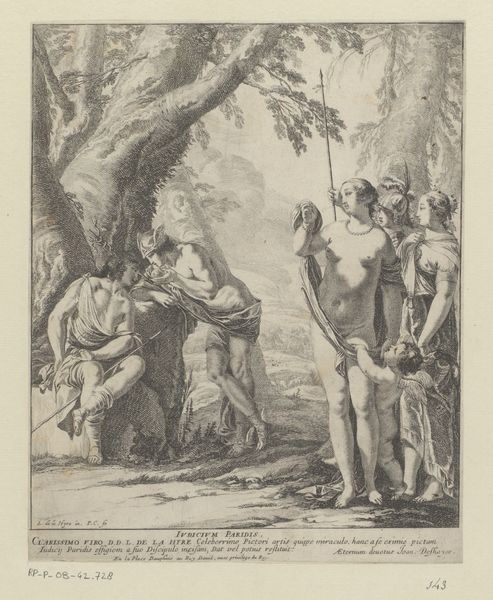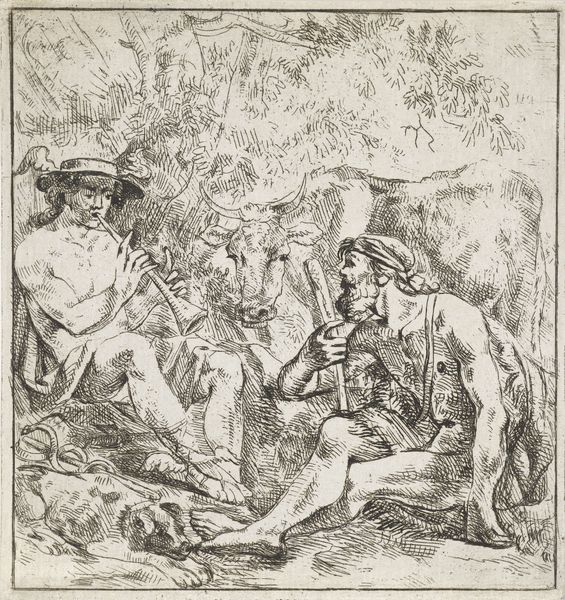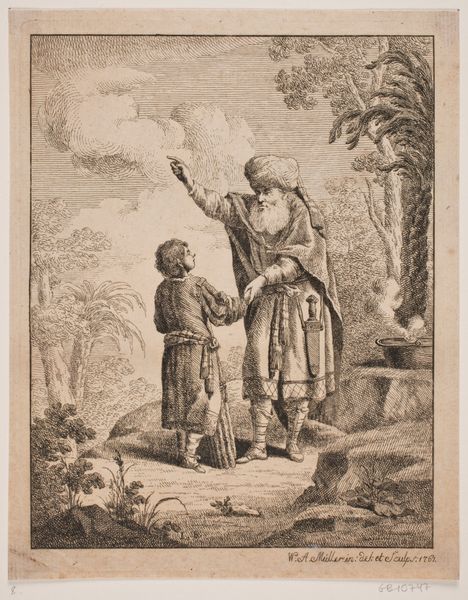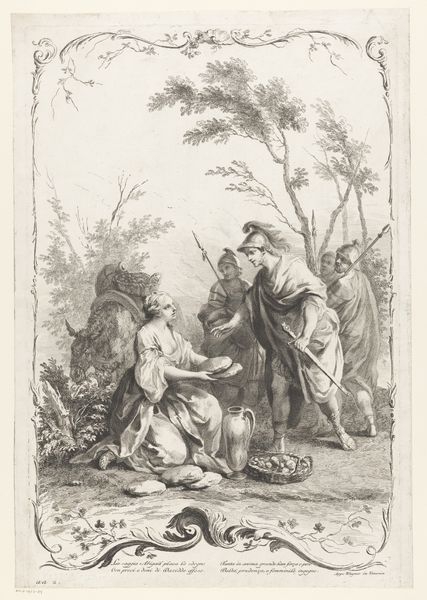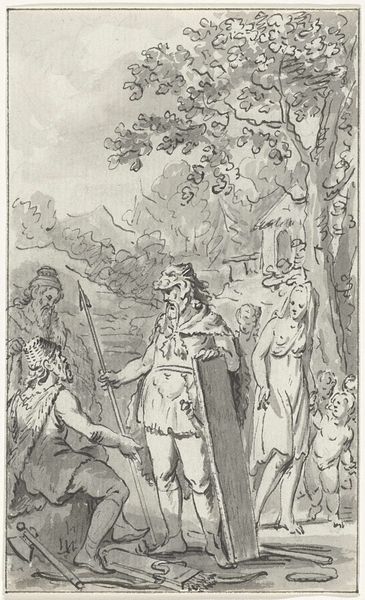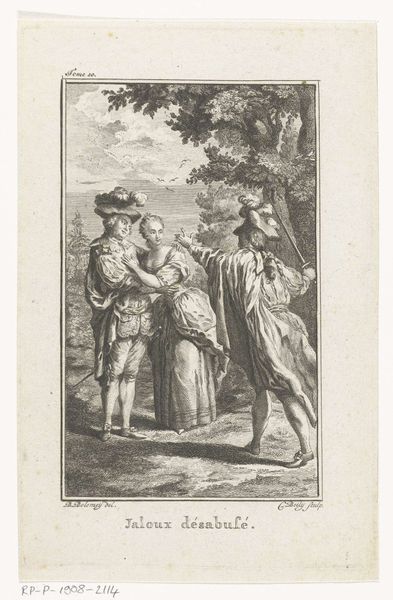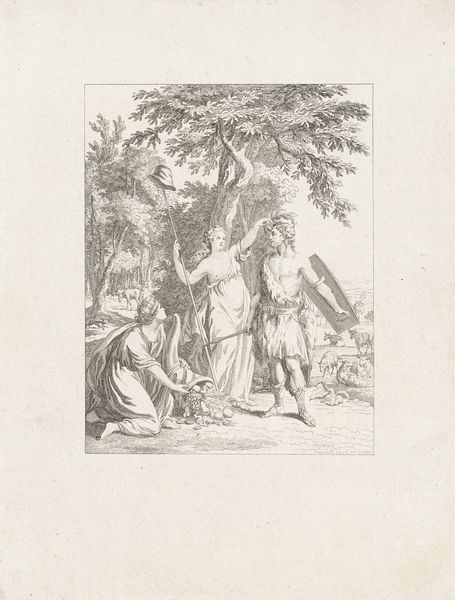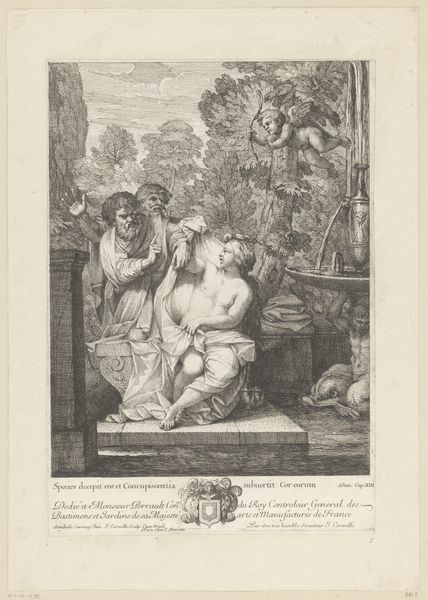
drawing, print, etching, paper
#
drawing
#
baroque
# print
#
etching
#
landscape
#
figuration
#
paper
#
pencil drawing
#
history-painting
Dimensions: 165 × 140 mm (image/sheet); trimmed within platemark
Copyright: Public Domain
Curator: Let's begin. Editor: We’re looking at “The Baptism of Christ,” an etching by Willem Panneels after Peter Paul Rubens, created around 1630. I find it fascinating how the artist captured such a profound religious moment with such stark, contrasting lines. What kind of narratives do you see emerging from this piece? Curator: The etching portrays a key religious event. However, let's examine the socio-political framework of the 17th century when viewing "The Baptism." Can we explore how themes of power, faith, and even colonialism intersect here? Editor: Colonialism? I hadn't considered that. Curator: Think about the global context. European powers were expanding, often under the guise of spreading Christianity. Does the act of baptism, within that context, also become a symbolic act of cultural imposition, a reshaping of identity? Who gets to decide what is sacred, and whose traditions are overwritten in the process? The contrast you noted earlier, could it also represent the stark division between the colonizer and the colonized? Editor: That is such a relevant, crucial aspect. Now I see a bigger, more profound story being told here. It moves past religion. Curator: Precisely. The performance of baptism is about authority as well as faith. This allows the narrative to move beyond its biblical form, questioning established dynamics and offering spaces for discourse and change. What did you notice in terms of brushstrokes? Editor: I initially perceived them just as artistic representation, however now with what you're saying, brushstrokes and lines are now like tools. Curator: Every element reflects socio-cultural concerns and historical power structures; brushstrokes were indeed like tools employed at that time. Now let’s reflect. How has this shifted your understanding of art? Editor: By questioning everything that is at the surface! This definitely motivates me to look further than first impressions and challenge preconceived notions. Curator: Exactly, every time you look at a piece of work you’ll now think twice, or even thrice!
Comments
No comments
Be the first to comment and join the conversation on the ultimate creative platform.
